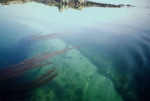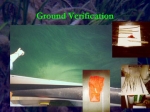Importance of seagrass beds as a habitat for fishery species around Jersey, English Channel
Abstract Category: Science
Course / Degree: PhD
Institution / University: University of Plymouth, United Kingdom
Published in: 2003
Worldwide, seagrass habitats have been identified as important nursery areas, refugia and feeding grounds for many faunal species, including those of commercial and recreational value. Their importance as both permanent and temporary habitats has been recognised in UK fisheries management and conservation strategies; however, it must be emphasised that current knowledge of the roles of seagrass habitats originates mostly from research carried out outside the UK. Also, the subtidal distribution of Zostera around the British Isles has not been rigorously quantified at many locations. Local studies are essential for providing the relevant information required by fishery agencies to make valued judgements of the importance of seagrass beds. This study reports the spatial and small-scale temporal utilisation of previously unsampled and unmapped subtidal seagrass (Zostera marina) beds by large mobile fauna in the coastal waters of Jersey, English Channel (49„a00N 02„a00W). The focus was on the value of the seagrass beds as a habitat for exploited species.
A map of the distribution and structure of the seagrass beds was produced, using a combination of aerial photography and acoustic survey methods. Landscape metrics enabled the configuration of the seagrass beds to be quantified and compared. The main factors affecting seagrass distribution and configuration were exposure and depth, with seagrass growing predominantly on the north-eastern, eastern and southern coasts, down to depths of 6m. Such depths limit the use of standard quantitative methods (e.g. throw traps). The bias of five alternative sampling methods was examined in terms of species composition, length-frequency distributions and operational efficiency (time cost). The influence of sampling at different times of day and tidal state was also assessed. Results indicated that a combination of trawl and beach seine sampling (day and night) best represented the mobile macro-fauna present in the seagrass bed examined.
To date, seagrass studies have identified that patterns of faunal assemblages associated with small-scale, seagrass bed characteristics weaken when studies move from local to larger geographical scales. Current knowledge is derived largely from beds within estuaries or sheltered bays, but the island of Jersey possesses coastal seagrass beds and is surrounded by an intensified anticlockwise current. Spatial scale was assessed initially using a three factor nested ANOVA, with six random sites nested within geographic location (north east/ south of the island), and sampled during the day and at night. The aim was to examine whether local-scale variability in large mobile fauna between beds was superseded by variability at a larger scale (the coastal location of the seagrass beds). Gross measures of total abundance indicated that location of the site was not as important as the variability between individual sites. However, ANOVA on individual species showed that patterns were not only site but species specific. Detailed mapping of the seagrass beds identified that the landscape configurations of the seagrass beds varied significantly with site. Habitat characteristics of ten seagrass beds were examined as potential influences on fish, decapod and cephalopod mollusc distributions. Seagrass habitat variables were derived from aerial photographic analysis (e.g. core area, edge density), acoustic data (e.g. depth, leaf height) and diver surveys of the beds (e.g. epiphyte index, density). The contributions of these variables as predictors of properties of the fauna were evaluated using multiple linear regression models. Results indicated that deeper seagrass habitats supported greater species diversity and species density than the shallower beds. More fragmented seagrass beds were not consistently found to support lower species diversity; after an initial decline with increasing fragmentation diversity increased, possibly due to the diverse mosaic of seagrass, algae and sand. However, juvenile density of larger, exploited fish species showed a negative relationship with increased fragmentation of the seagrass beds. In addition to landscape configuration and depth, smaller-scale structural changes in both canopy height and epiphytal load appeared to influence densities of smaller decapod crustaceans and small and cryptic fish densities. The density of both groups increased with increasing seagrass complexity.
Thesis Keywords/Search Tags:
Zostera marina, seagrass, habitat mapping, aerial photography, landscape ecology, fish, decapods, diversity, marine ecology, habitat fragmentation, United Kingdom
This Thesis Abstract may be cited as follows:
Jackson, E.L. (2003). The importance of seagrass habitats for fishery species in Jersey, English Channel. PhD Thesis. Marine Biology and Ecology Research Group, University of Plymouth, UK. 277pp.
| Thesis Images: | |

|
One of the few sunny days! (click to enlarge) |

|
Study Location (click to enlarge) |

|
Zostera marina and Sargassum at Les Elavees (click to enlarge) |

|
Ground Verification (click to enlarge) |
Submission Details: Thesis Abstract submitted by Emma Louise Jackson from United Kingdom on 20-Jul-2004 18:22.
Abstract has been viewed 4327 times (since 7 Mar 2010).
Emma Louise Jackson Contact Details: Email: emma.jackson@plymouth.ac.uk
Disclaimer
Great care has been taken to ensure that this information is correct, however ThesisAbstracts.com cannot accept responsibility for the contents of this Thesis abstract titled "Importance of seagrass beds as a habitat for fishery species around Jersey, English Channel". This abstract has been submitted by Emma Louise Jackson on 20-Jul-2004 18:22. You may report a problem using the contact form.
© Copyright 2003 - 2025 of ThesisAbstracts.com and respective owners.